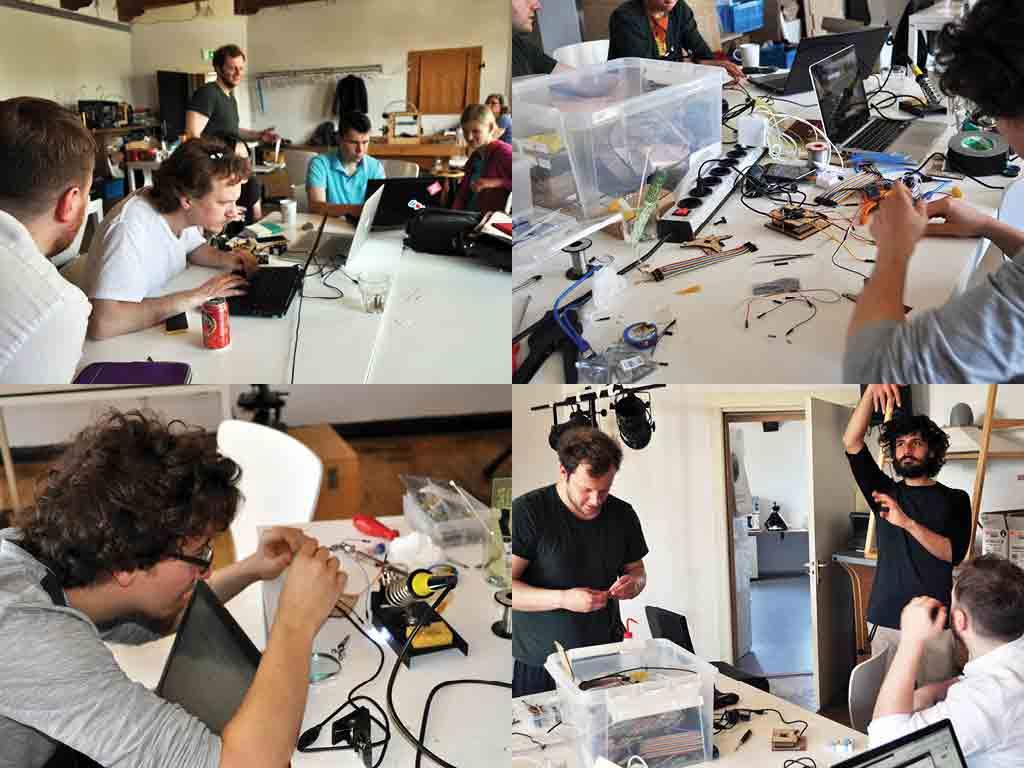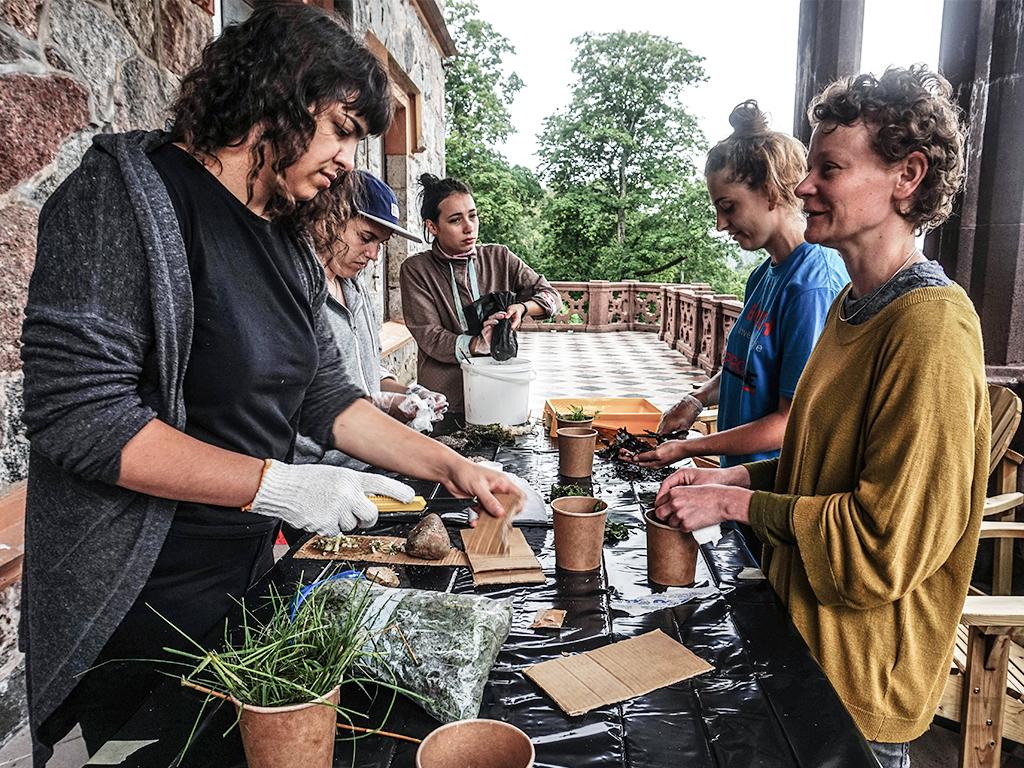During the weekly open Fablab day, we hosted a seven hour long, intense and fun Hacksprint about Biotic Games. Games offer ways of human interaction with different kinds of matter, whether it is a board game with friends or a dive into the digital world of computer games. Now, games enter the world of biology. In a fun and engaging way it’s goal is to engage a broad audience with biology, to educate people in hands-on skills in biotechnology and even in engineering, optics and programming. But recently researchers also envioned the potential for new forms of human-biology interaction.
Our hero
Most famous computer games have their heroes, ours is Euglena gracilis, a light-sensitive, unicellular organism. This characteristic can be triggered by aligned LEDs in order to direct their movement. Using a webcam, which is hacked easily into a microscope (more information can be found at the BioHack Academy repository), and software to track the movement (Processing + OpenCV), the live video footage can be used to build games on top on it. In our design process we were inspired by prior work of several biohackers and mainly by the research group of Assistant Professor Ingmar Riedel-Kruse at Stanford University. We are delighted that Riedel-Kruse is not only sharing his work with us, but also is involved in a workshop about Biotic Games we are organizing at the Campus Party festival at the end of May.
A group of DIY biologists, Fablab visitors and creative coders gathered at Nieuwmarkt on this sunny day with the goal to make and play biotic games in a DIY-fashion. After watching examples of Euglena soccer and Pacman, we discussed new game ideas, under the motto “the Euglena should not follow the game, the game should follow the Euglena”. These also included interactive sound systems and games with computer-controlled Euglena.
Hacking fury
After some brainstorming, the hacking fury started. Devices were build, wires were soldered and microfluidic slides where tested. Meanwhile, others spend the day tinkering with the tracking software. Besides being great fun, the Hacksprint was a really helpful day for us, for hacking around, debugging code, getting everybody on the same page and testing what is feasible within a limited time. We would like to thank all the participants for their time and great work.
Still, you might still ask yourself, why is this piece titled “Euglena Spaceships”? Well, this is our way to say thank you to all the hackers out there who brought us computer games in the first place. By hacking code on the PDP-1, Steve Russell and his hacker friends from the Tech Model Railroad Club created one of the first computer games, "Spacewar!". From this point on, computer games did not only grow to be the centre of a major industry, they also became a new world of joy, creativity and a motivation to interact with technology. To embrace this, we decided to design our setup in the shape of a spaceship and we are working hard on a biotic remake of “Spacewar!”.
Roland van Dierendonck & Christian Schulz


